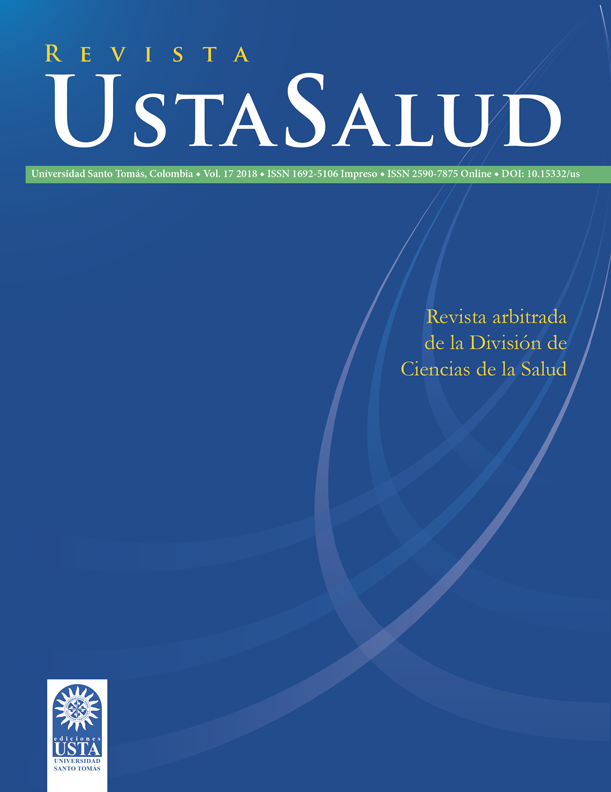Conservative approach in possible restoration with composites: clinical accompaniment of 2 years
DOI:
https://doi.org/10.15332/us.v17i0.2189Keywords:
Restorative dentistry, Restorative repair, Composite resin repairAbstract
Replacement of defective restorations with new ones has been a major reason for restorative procedures. However it is known that during the removal of the old material there is a progressive increase of the cavity size, weakening the healthy dental remnant. Modern dentistry and the advent of adhesive protocols allow the dentist to opt for a more conservative treatment plan. As an alternative to the total replacement of the restoration, both the surface re-polishing can be performed, restoring smoothness and gloss or restorative repair, which with the addition of composite can reanatomize and regularize the color of restorations of old, but well-adapted resins. The present article aims to make a clinical case report of a conservative approach in posterior composite restorations, demonstrating the technique and clinical success after a two - year follow - up.
Downloads
References
Brantley CF, Bader JD, Shugars DA, Nesbit SP. Does the cycle of rerestoration lead to larger restorations? J Am Dent Assoc. 1995;126(10):1407-13.
Anfe TEA. Avaliação da possiibilidade de remoção do manchamento de resinas compostas submetidas ao envelhecimento artificial através do re-polimento. [Dissertação de Mestrado]. São Paulo. Faculdade de Odontologia da USP; 2009.
Rodrigues SA Jr, Ferracane JL, Della Bona A. Influence of surface treatments on the bond strength of repaired resin composite restorative materials. Dent Mater. 2009;25(4):442-51. DOI:10.1016/j.dental.2008.09.009.
Hickel R, Peschke A, Tyas M, Mjör I, Bayne S, Peters M, Hiller KA, Randall R, Vanherle G, Heintze SD. FDI World Dental Federation: clinical criteria for the evaluation of direct and indirect restorations-update and clinical examples. Clin Oral Investig. 2010;14(4):349-66. DOI:10.1007/s00784-010-0432-8.
Hickel R, Roulet JF, Bayne S, Heintze SD, Mjör IA, Peters M, Rousson V, Randall R, Schmalz G, Tyas M, Vanherle G. Recommendations for conducting controlled clinical studies of dental restorative materials. Clin Oral Investig. 2007;11(1):5-33. Erratum in: Clin Oral Investig. 2008 Mar;12(1):97. PubMed PMID: 17262225.
Ribeiro MDF & Pazinatto FB. Critérios clínicos para decisão entre substituição ou reparo de restaurações em resina composta – revisão de litaratura. Rev. bras. odontol., Rio de Janeiro. 2016;73(3):223-30.
Pallesen U, van Dijken JW. A randomized controlled 30 years follow up of three conventional resin composites in Class II restorations. Dent Mater. 2015;31(10):1232-44.
Bagheri R, Tyas MJ, Burrow MF. Subsurface degradation of resin-base composites. Dent Mater. 2007 Aug;23(8):944-51. PMID: 16996586.
Cvar JF, Ryge G. Reprint of criteria for the clinical evaluation of dental restorative materials. 1971. Clin Oral Investig. 2005;9(4):215-32.
Marquillier T, Doméjean S, Le Clerc J, Chemla F, Gritsch K, Maurin JC, Millet P, Pérard M, Grosgogeat B, Dursun E. The use of FDI criteria in clinical trials on direct dental restorations: A scoping review. J Dent. 2018; 68:1-9. DOI:10.1016/j.jdent.2017.10.007. PMID: 29055692.
Costa J, Adams-Belusko A, Riley K, Ferracane JL. The effect of various dentifrices on surface roughness and gloss of resin composites. J Dent. 2010;38 Suppl 2:e123-8.
Masioli et al. Reparo em Restaurações de Resina Composta: procedimento simples e conservador. UFES Rev. Odontol., Vitória. 2006; 8(3):38-43.
Azarbal P, Boyer DB, Chan KC. The effect of bonding agents on the interfacial bond strength of repaired composites. Dent Mater. 1986;2(4):153-5. PMID: 2943623.
Bacchi A, Assad-Calvante LM, Jochims-Schneider LF, Xediek- Consani RL. Reparos em restaurações de resina composta: revisão de literatura. RFO UPF. 2010;15(3):331-35.
Li, J. Effects of surface properties on bond strength between layers of newly cured dental composites. Journal of oral rehabilitation. 1997;24(5):358-60.
Tezvergil A, Lassila LVJ, Vallittu PK. Composite-composite repair bond strength: effect of different adhesion primers. Journal of dentistry. 2003;31(8):521-5.
Bonstein, Garlapo D, Donarummo J, Bush PJ. Evaluation of varied repair protocols applied to aged composite resin. J Adhes Dent. 2005;7(1):41-9.
Bacchi A, Consani RL, Sinhoreti MA, Feitosa VP, Cavalcante LM, Pfeifer CS, et al. Repair bond strength in aged methacrylate- and silorane-based composites. J Adhes. 2013;15(5):447-52.
Ozcan M, Valandro LF, Amaral R, Leite F, Bottino MA. Bond strength durability of a resin composite on a reinforced ceramic using various repair systems. Dent Mater. 2009;25(12):1477-83. DOI:10.1016/j.dental.2009.06.020.
Özcan M, Corazza PH, Marocho SM, Barbosa SH, Bottino MA. Repair bond strength of microhybrid, nanohybrid and nanofilled resin composites: effect of substrate resin type, surface conditioning and ageing. Clin Oral Investig. 2013;17(7):1751-8. DOI:10.1007/s00784-012-0863-5.
Hamano N, Chiang YC, Nyamaa I, Yamaguchi H, Ino S, Hickel R, et al. Effect of different surface treatments on the repair strength of a nanofilled resin-based composite. Dent Mater J. 2011;30(4):537-45.
Hamano N, Chiang YC, Nyamaa I, Yamaguchi H, Ino S, Hickel R et al. Repair of silorane-based dental composites: influence of surface treatments. Dent Mater. 2012;28(8):894-902. DOI:10.1016/j.dental.2012.04.014.
Lührs AK, Görmann B, Jacker-Guhr S, Geurtsen W. Repairability of dental siloranes in vitro. Dent Mater. 2011;27(2):144-9. DOI:10.1016/j.dental.2010.09.009.
El-Askary FS, Fawzy AS.; Abd Elmohsen HM. Tensile bond strength of immediately repaired anterior microfine hybrid restorative composite using nontrimmed hourglass specimens. 2009;11(1):41-7.
Loomans BA, Cardoso MV, Roeters FJ, Opdam NJ, De Munck J, Huysmans MC, Van Meerbeek B. Is there one optimal repair technique for all composites? Dent Mater. 2011;27(7):701-9. DOI:10.1016/j.dental.2011.03.013.
Brosh T, Pilo R, Bichacho N, Blutstein R. Effect of combinations of surface treatments and bonding agents on the bond strength of repaired composites. J Prosthet Dent. 1997;77(2):122-6. PMID: 9051597.
Jaffer F, Finer Y, Santerre JP. Interactions between resin monomers and commercial composite resins with human saliva derived esterases. Biomaterials. 2002;23(7):1707-19.PMID: 11922474.
Costa TR, Serrano AM, Atman AP, Loguercio AD, Reis A. Durability of composite repair using different surface treatments. J Dent. 2012;40(6):513-21. DOI: 10.1016/j.jdent.2012.03.001.















